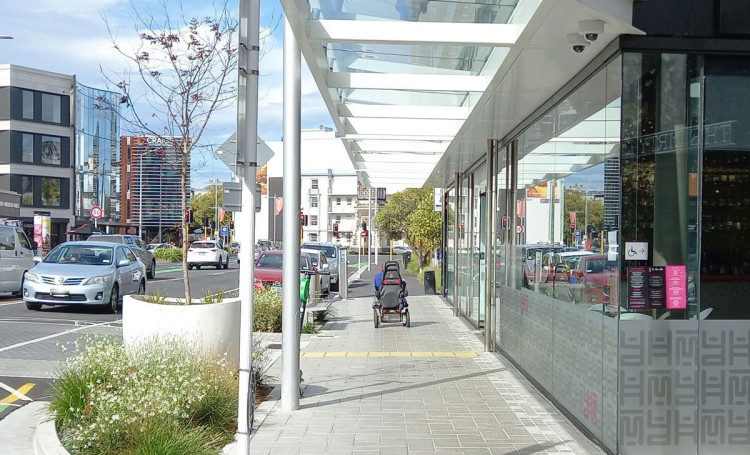Crossfall is the slope of the footpath at right angles to the direction of travel. If there is no gradient, some crossfall is required for drainage, but excessive crossfall in the footpath through zone requires many people (including for example, those using manual wheelchairs) to use extra energy to resist the sideways forces.[1] As the crossfall is invariably towards the road where footpaths are in the road reserve, anyone losing their balance is directed towards motorised traffic.
Footpath through zone crossfalls should always be minimised:
The crossfall is really important. If it's more than 2 percent and I am using my manual wheelchair, it is exhausting trying to keep myself traveling straight ahead. |
Where conditions could lead to greater crossfall, the footpath can be raised or lowered over the whole width. Alternatively, steeper crossfalls can be created in the street furniture and/or frontage zones as shown below.

Footpath with acceptable crossfall, Christchurch (Photo: Jeanette Ward)

Correct and incorrect provision of crossfall